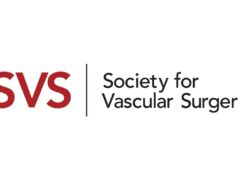Sexual harassment is known to be more pervasive in male-dominated workplaces and flourishes in a climate of tolerance and culture of silence, according to Bernadette Aulivola, MD, of Loyola University Medical Center, Maywood, Illinois.
“We sought to examine the prevalence of sexual harassment in academic vascular surgery practices, identify factors associated with occurrence, determine reporting barriers, and identify any gender bias that exists,” said Aulivola.
In Wednesday’s VESS session, Aulivola will present the results of an anonymous survey that she and Matthew R. Smeds, MD, of Saint Louis University, conducted to examine the issue. The survey was emailed to 346 vascular surgery faculty members at 52 training sites in the United States.
“This research stemmed from a similar project done in vascular surgery trainees (residents and trainees) that identified a significant amount of harassment occurring at this level with a concomitant fear of reporting and lack of knowledge of institutional reporting mechanisms. We thought an analysis of harassment at the attending physician level may be relevant. There is significant gender bias in medicine in general and a not insignificant rate of harassment that occurs,” Smeds said in an interview.
Of the invitations sent, 149 (43%) completed the survey. Among these, 48/149 (32%) thought harassment occurred more commonly in surgical specialties with historical male dominance. In addition, ignoring the behavior, and hierarchy/power dynamics were the most common reasons given for its occurrence. Overall, 61/149 (41%) reported experiencing workplace harassment. Being told unwanted sexually explicit comments/questions/jokes, being called a sexist slur/nickname, or being paid unwanted flirtation were the most commonly described behaviors.
Those harassed were significantly more likely to be female (37% vs. 13%), and on average had experienced 2.6 (of 10) types of harassment. Despite 84% of respondents acknowledging institutional reporting mechanisms, only 7.2% of the harassing behaviors were reported.
The most common reasons for not reporting including feeling the behavior was “harmless” (67%) or “nothing positive would come of it” (28%), although 30% of respondents feared repercussions or felt uncomfortable identifying as a target of sexual harassment and only 59% of respondents reported that they would feel comfortable discussing the issue with departmental/divisional leadership.
“A significant number of vascular surgeons in academic practice have experienced workplace sexual harassment,” Aulivola said. “While most are aware of institutional reporting mechanisms, very few events are reported and less than 60% of respondents feel comfortable reporting to departmental/divisional leadership. Female vascular surgeons believe gender influences hiring, promotion, compensation, and attainment of life goals. Further work is necessary to identify methods of reducing workplace sexual harassment and optimize gender disparity in academic vascular surgery practice,” she concluded.
Wednesday, June 12
12:30-4:15 p.m.
Gaylord National, Maryland D
V2: VESS Paper Session 2: VESS18











